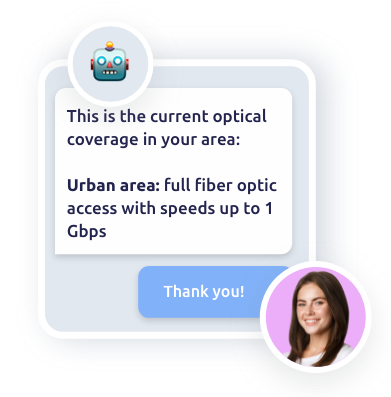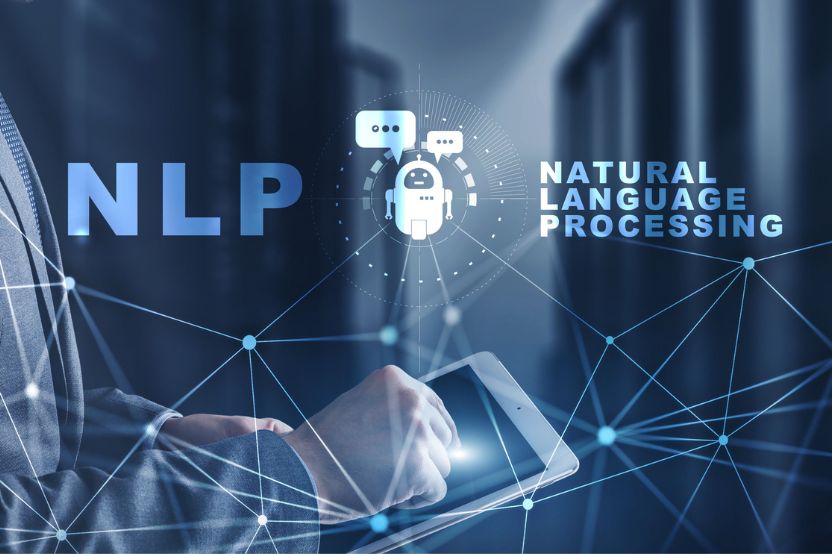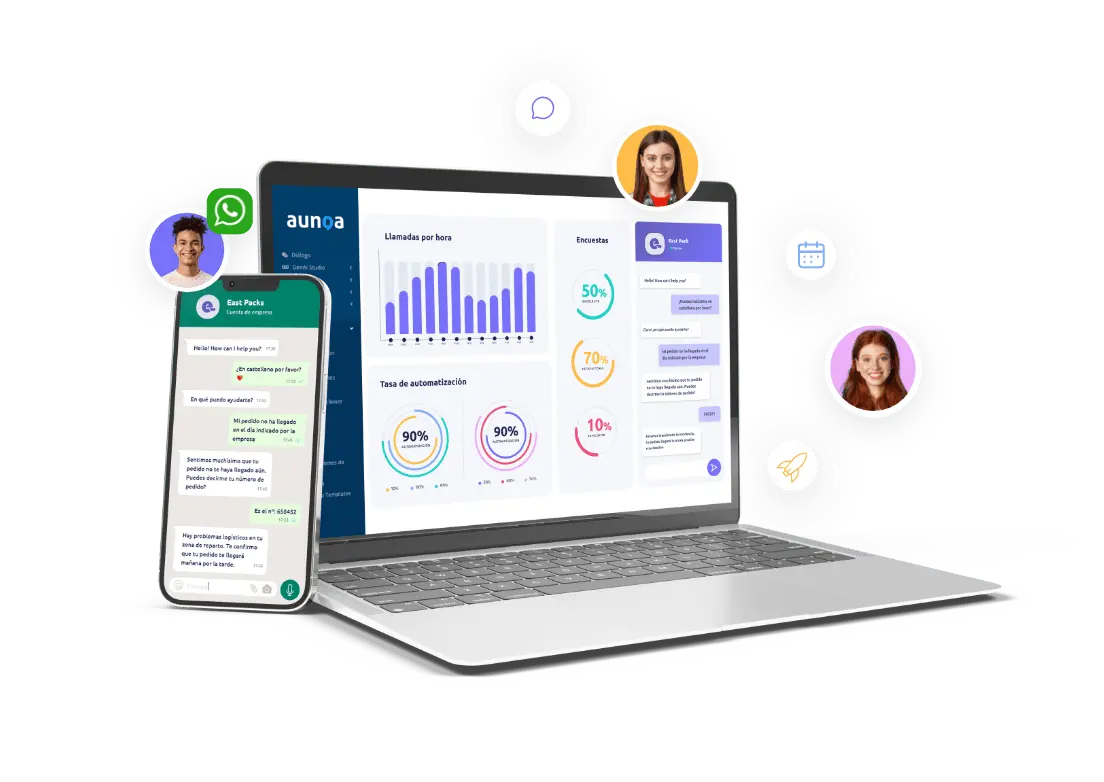Natural language processing (NLP) is a key technology in the development of intelligent chatbots. This guide will help you understand how NLP works and how it can improve the customer experience through chatbots.
What is natural language processing?
Natural language processing (NLP) is a branch of Artificial Intelligence focused on the relationship between human language and machines, based on the use of natural language.
Thanks to natural language processing (NLP) it is possible to endow computational systems with capabilities to identify the use of natural language, for example, programming a computer to understand, process and generate language like a person. This is how computational linguistics arises.
What is the difference between the concepts of AI and Machine Learning, and what is their real relationship to NLP-Natural Language Processing?
Artificial Intelligence includes a wide range of technologies that make it easier for machines to develop their own intelligence. By combining algorithms, it is possible to create machines with the same capabilities as humans, such as decision-making.
AI, Machine Learning and NLP
Both NLP and Machine Learning are part of AI and both share techniques, algorithms and applications. In fact, AI Chatbots involve the combination of natural language processing (NLP) and Machine Learning.
How natural language processing works
What is expressed in written or spoken form generates a wealth of data and information.
Through tone, sentence structure, the use of idioms and language, word choice, expressions and punctuation, humans can communicate and interpret this information.
And it is through natural language processing (NLP) that machines can understand this complex set of data and information.
How do they do this? By decoding unstructured data. By looking not only at language as a succession of symbols, but also at the hierarchical structure of natural language, i.e. sentences or phrases as coherent ideas.
In short, natural language processing – NLP not only finds keywords, it also decodes the meanings and intentions of words. Technically, it breaks incoming language into small parts that can be processed and analysed through text and speech vectorisation. This vectorisation allows the machine to transform the language into something it understands and give it meaning.
AI then provides algorithms to the machine so that it can identify and process the language rules. It also employs semantic and syntactic analysis to understand grammatical rules and find the actual meaning of communications.
Chatbots with NLP and natural language processing

Chatbots use natural language processing (NLP) and machine learning to establish natural conversations automatically. Artificial intelligence allows them to understand what users are saying to them and respond accurately or perform the correct action.
Through this technology, a conversational assistant can recognise the context in which the conversation takes place and make a historical analysis that recognises patterns among users. There are 3 key concepts in the development and training of these conversational models:
- Intents: These are the intentions of what a user has wanted to say, which facilitate the search for typologies and resources to engage in interactions.
- Entities: These are the entities, the inputs that the user uses and that allow conversations to take place, as they determine the response of the Chatbot, for example, words, categories or phrases. Intentions and entities are associated.
- Dialogs: This is the structure of the conversation. Once the Chatbot identifies what the user wants to say, it triggers a flow with the different possibilities, indicating what the Chatbot should answer to continue the conversation.
How to use natural language processing to improve the Customer Experience
Chatbots that use Artificial Intelligence offer a better experience and are more effective than rule-based bots. This is because NLP, NLU and Machine Learning enable them to understand human language and user intent, execute tasks simultaneously and improve over time.
NLP-enabled chatbots offer several advantages:
- Personalisation: Integration with CRMs for personalised interactions.
- Automation: Resolution of simple queries without human intervention.
- 24/7 availability: Continuous attention at any time and channel.
In addition, Chatbots have capabilities that allow them to enhance the customer experience at any time and from any channel:
- Chatbots or virtual assistants are ideal solutions to improve customer touchpoints and the buying process. Users need assistance before, during and after purchasing a product or service, so providing support in any channel is essential to remove the barriers that prevent an optimal Customer Journey.
- They allow personalisation thanks to the possibilities of integrating with different CRMs and databases. This makes it possible to increase the value of interactions, even if the volume of queries is very high. In the case of eCommerce, Chatbots are tools that allow you to stand out from the competition, especially in high sales campaigns.
- They prevent customers from making calls to resolve frequently asked questions. Chatbots are an alternative to automate simple queries and, in addition, they allow scaling self-help channels for those customers who prefer to resolve queries by digital means.
- They offer effective 24/7 support and solutions. Chatbots become first-level agents and are available 24/7 to solve immediate problems by responding to queries automatically.

In conclusion, to improve the customer experience, it is essential to take advantage of the technological innovations available today. One of the most effective tools to achieve this is the use of natural language processing (NLP). Chatbots and virtual assistants are outstanding examples of NLP applications that can radically transform the way businesses interact with their customers.
These chatbots, powered by natural language processing algorithms, can understand and respond to customer queries and needs quickly and accurately, offering a personalised service 24 hours a day. This not only improves customer service efficiency, but also increases customer satisfaction by providing fast and accurate responses to customer queries, resulting in a more positive customer experience overall.
In short, the use of natural language processing through chatbots and virtual assistants is a key strategy to elevate the customer experience to new levels of excellence.
At Aunoa we develop Chatbots with Conversational Artificial Intelligence that employ natural language processing.
Our team of specialists, linguists and psychologists are in charge of designing Chatbots and training the natural language processing models to offer tailor-made solutions that improve over time and guarantee high automation rates.
Want to know more about AI and chatbots? Subscribe to our newsletter for exclusive content and expert advice.
For more information on how we implement and train our chatbots, request a free demo.






